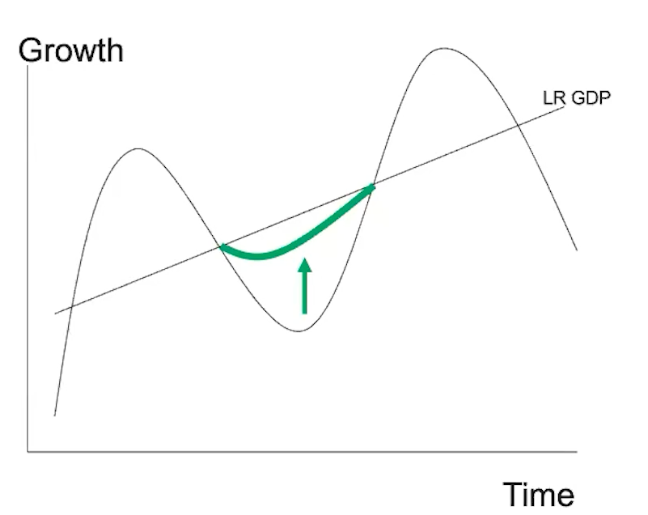As mentioned in 3.8 — Fiscal Policy, automatic stabilizers are non-discretionary fiscal policies that are designed to moderate fluctuations in the economy without direct government intervention. They essentially smooth out the business cycle by automatically counteracting inflationary and recessionary gaps.
The most common examples are:
- Income Taxes
- Unemployment Assistance
- Temporary Assistance
For instance, when an economy is experiencing expansion, we will see some automatic stabilizers kick in: • Income taxes • Corporate taxes • Decreases in unemployment insurance
Effects on the Business Cycle
In the below image, we have an example of how automatic stabilizers help flatten out the curves and make the business cycle less aggressive during recessionary and inflationary gaps:

Since automatic stabilizers are usually transfer payments, they don’t directly contribute to the GDP. They are mostly used to assist individuals who are most hurt in economic downturns, so they don’t directly affect the AD/AS curve. However, we assume that these individuals will use these transfer payments for their own spending, which will increase consumer spending and eventually theoretically shift the AD/AS curves.